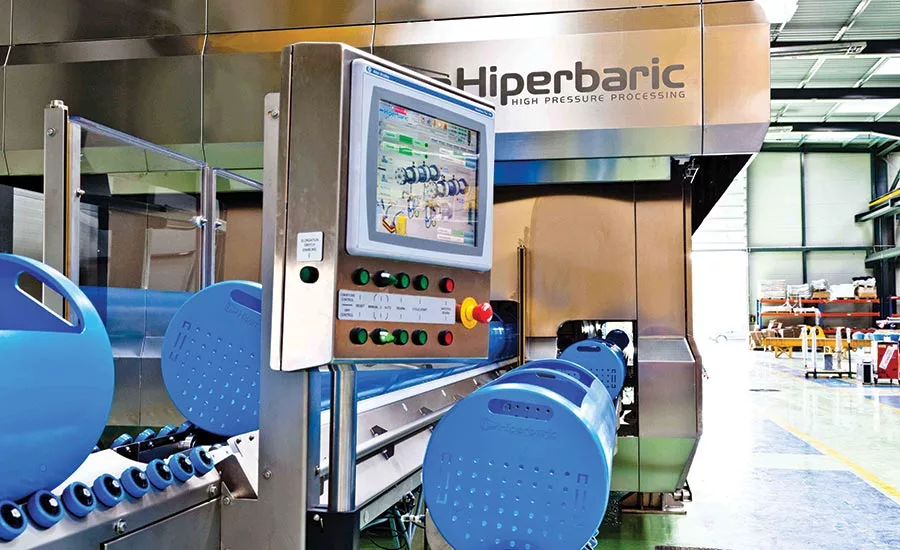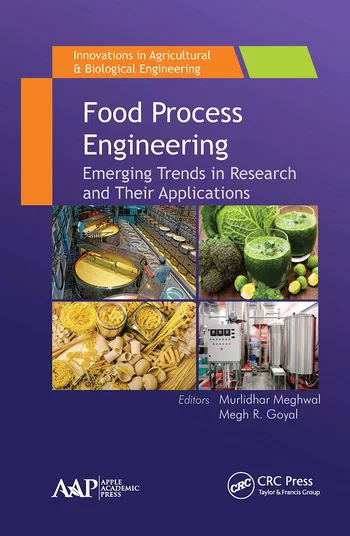Consumer demands, regulatory requirements shape pet food processing trends

Some pet food manufacturers use high pressure processing to control pathogens and spoilage bacteria; preserve nutrients, flavor and texture; and extend shelf life.
Photo courtesy of Hiperbaric

A control panel allows the operator to see which part of the high pressure process is taking place in the chamber.
Photo courtesy of Hiperbaric
Spending on pets keeps going up, with owners expected to pay out more than $75 billion for their furry, scaled and feathered friends in 2019, including nearly $32 billion for food, the American Pet Products Association estimates.
Ingredients are trending toward more natural products with more meat for dogs and cats, and packaging looks more like the containers for human food as younger consumers and empty-nesters treat their pets like four-legged children, Food Engineering reported in March.
Pet food follows broader human food trends because it must appeal to pet owners who buy it, and these consumers are now expecting the same high standards for their animals’ food as their own: convenience, quality, authenticity and transparency. In addition, trust, value and ethics affect decisions, depending on each buyer’s personal beliefs.
Add to this the FDA’s Food Safety Modernization Act, which enacted requirements for all pet food and treat makers, and manufacturers may have to upgrade their processing lines not only to satisfy pet owners’ expectations but also to comply with federal regulations.
Design Engineering
Just as pet food is following the same trends as its human food counterpart, pet food manufacturing lines mirror those for human food.
Jonathan Conrad, mechanical design lead at SSOE Group, a global project delivery firm for architecture, engineering and construction management, has seen the similarities in action. “Interestingly, I have helped a client convert a plant from pet food production to cereal and assisted with the conversion of a plant from cereal production to pet food.”
The process for dry pet food is very similar to a cereal line, he says. “The raw ingredients are mixed, cooked, extruded into the required shape and size, then dried and conveyed to a scale system. The scale then delivers a metered amount to the bagging machine. The bag is then filled, sealed and conveyed to a palletizing system and sent off to the retailer. There are a variety of quality checks throughout the process, such as monitoring weight, checking for foreign matter and examining the quality of the food.”
Sam Thurber, senior project manager at SSOE, adds, “As we execute both human and pet food production projects, we see a strong correlation. Our pet food projects follow the same quality and safety protocols observed in our human food production projects.”
When asked about wet food production, Thurber described the process for a current project in the segment: “The raw ingredients are mixed in a kitchen and blended with spices, vegetables, grains and flavors. Once blended, the product is pumped to canning fillers and seamers, and the cans (or pouches) are cooked in retorts. From the discharge of the retorts, the product is cooled, dried, labeled and sent to packaging for placement into cases and then to pallets. The process, especially the packaging end, is highly automated, utilizing multiple robots, automatic palletizers and automated guided vehicles, or AGVs.”
This fits the data gleaned from Food Engineering’s 2018 State of Food Manufacturing Survey that revealed that automation and robotics are believed to be the most impactful trend that will affect manufacturing operations.
As far as the specifics about how pet food companies are using automation and robotics in their plants, top brands often are reluctant to discuss their proprietary processes.
But Thurber gives some insight about their priorities, saying that ROI is the main criterion for upgrading their processing lines. “Pet food is no different than any other manufactured product. If the increase in efficiency and quality financially justifies the project, it will move forward.”
He adds that, in many cases, there is no latitude when selecting equipment. “This could be because there are proprietary processes for which no alternatives are available.”
However, in areas such as utilities, SSOE frequently recommends equipment substitutes. “These alternatives are usually centered on saving the client capital or improving delivery or installation time. On our wet pet food project currently under construction, our design alternatives led to savings that exceeded our fees for the project,” Thurber explains.
And Conrad says that SSOE’s pet food projects typically improve productivity and reduce labor requirements while still meeting the demands of the retail market. “With newer technology, we also see a reduction in maintenance costs. With the standardization of equipment, clients see a reduction in the need to store so many spare parts,” he says.
High Pressure for Safety, Quality
ROI aside, pet food makers, like human food processors, must ensure the process and product are safe when upgrading a manufacturing line.
Throughout cooking, shaping and drying, safety steps such as pH testing, ingredient verification, temperature controls and metal screening ensure quality food.
Some ingredients, such as meat meals, vitamin mixes and grains, are blended and ground to a desired size that allows for proper cooking with steam and heat. These ground ingredients are mixed with meat, and water, steam and fat are added during the cooking process to ensure the product reaches an appropriate temperature to eliminate bacteria and pathogens. The Pet Food Institute says that reaching a temperature standard is often the kill step that eliminates potentially deadly pathogens.
But using heat for this step is not the only method available. High pressure processing is another method that pet food manufacturers are starting to use.
HPP applies high pressure around a packaged product to control pathogens and spoilage bacteria; preserve nutrients, flavor and texture; and extend a product’s shelf life.
Vinicio Serment, U.S. applications manager for Hiperbaric, an HPP equipment maker, says that for dry pet food, HPP is used to eliminate harmful bacteria that could survive to the drying process, such as Salmonella spp., Listeria monocytogenes or E. coli.
“Then the HPP product is dried and packed, ready to be sold. Companies can have peace of mind in avoiding millions of dollars in recalls due to food safety because HPP is controlling that,” he says.
The mission is the same as in human food: to provide the best way to preserve food that keeps top quality without compromising taste, he says. “Another part of our company mission is to ensure pet and human safety, since pet owners’ health may be indirectly compromised by accidentally transferring pathogens to utensils, home surfaces or even their own bodies while handling contaminated pet food.”
Many companies have entered the pet food space in the last decade, and some are facing safety issues because they do not use preservative techniques because of their raw status, Serment says. “This is why some brands are using HPP as a preservative technique. They then can sell frozen product or dehydrate the food by freeze-drying (also known as sublimation) to reduce water content and achieve shelf-stable products.”
Some pet food companies use tolling services to access HPP, but recently the sector hit a new milestone with the installation of two Hiperbaric HPP systems dedicated to pet food, Serment says.
Other steps that help ensure safety during the manufacturing process include:
- Verifying that proper temperature, pressure and pH are maintained
- Testing the facility for the presence of bacteria
- Inspecting for metals
- Ensuring correct equipment setup and functionality
- Verifying the correct product size, shape and color, as well as appropriate levels of protein, fat and moisture
- Sanitizing equipment thoroughly
Go Get It
The pet food business is booming, and it looks like it will continue to do so for some time. So whether a company chooses to automate its line, add robotics, use a new control system or incorporate a new process such as HPP, the returns on these investments might not be as quick as Fido can fetch a Frisbee, but the outlook is strong.
For more information:
American Pet Products Association,
www.americanpetproducts.org
SSOE Group,
www.ssoe.com
Hiperbaric,
www.hiperbaric.com
Pet Food Institute,
www.petfoodinstitute.org
Looking for a reprint of this article?
From high-res PDFs to custom plaques, order your copy today!








